Soil, land and community
Course agenda
Detecting and visualizing the complexity of issues in communities and
neighborhoods
Differentiating between ‘design for’, ‘design with’ and ‘design within’
communities
Engaging with existing communities and pointing out realistic inferences and needs
First hand understanding of the matters of concern
Being strategic with the community engagement and proposing meaningful interventions
Broadening perspectives with respect to what community
engagement means and how non-linear the processes are
Visiting different communities in Barcelona to comprehend the difficulties faced to keep the communities functional
SOIL
Understanding the ‘soil’ aspect of communities
Q: What does soil mean to us?
A: It has become apparent from the conversations and discussions we have had on the first day that soil could have different aspects to it. It could mean what you see and feel, it could be the complex ecological compositions, it could be something intangible but existent.
Q: Does soil have an impact on the communities and the different species around?
A: Yes, it does. Something else that was pointed out to us was also that we are ingrained to mostly think about human living and interventions catering to the betterment of human communities. What we also need to consider the non-human entities/communities who are also affected by soil behaviour. When we think of soil, we need to understand it’s function underground, on ground and over ground as well.
Q: What does ‘friction’, ‘conflict’ and ‘tension’ mean when it comes to soil?
A: To us, all the three words are interconnected in meaning. with respect to soil, conflicts and tension could be anything that poses to be an obstacle in its function. The obstacles could be multi-sensory: Visual barriers, physical blockades like fences, conflicting odour, air barriers like dust or smoke, tactile barriers like changes in surfaces, and auditory barriers like loud and unpleasant sounds.

Exercise

Documentation

Conclusions

Analysis: Interconnections
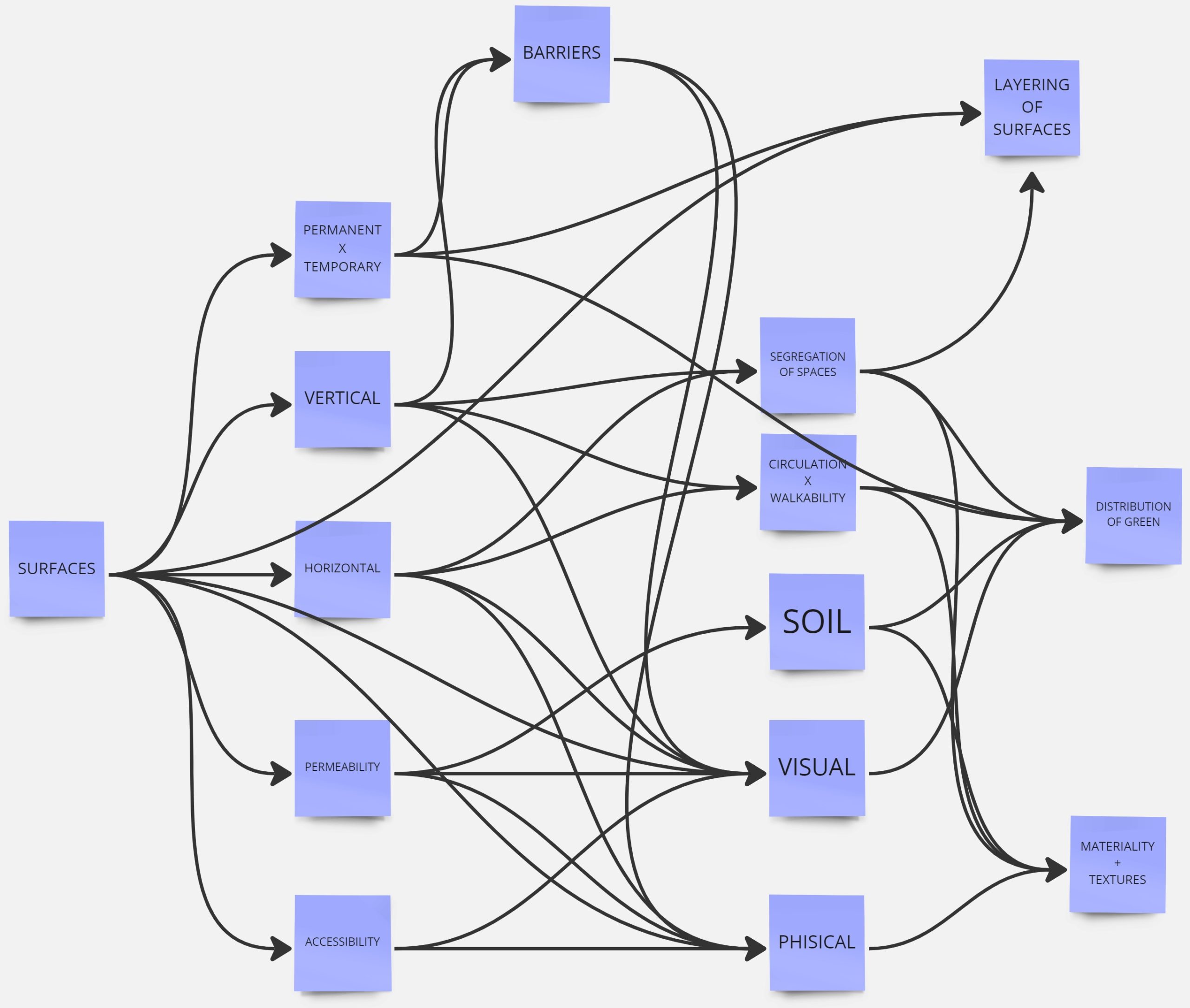
Site visit and exercise
Q: What is a community? Personal experiences? Why do you feel a part of a community?
A: We listed down communities we were a part of and could
relate to like migrant communities, skateboard communities, dance clubs, Latin American communities and student communities. For one to feel part of a community, there have to be activities and people who are also a part of that community, just to have a sense of
belonging. Talking about your culture, your food, your way of dressing, your language, your festivals, and so many more; All these account for a community.
Q: What infrastructure is required to make a community successful? To make the people feel more comfortable?
A: We as a group believe that you need more welcoming spaces that allow for accommodating the different communities in a city. A network rather. And how does a person who is new to the city have access to these spaces where one can meet more people from their communities? We believe there should be a digital platform that can help them navigate through the different obstacles. So overall, a physical and a digital infrastructure.

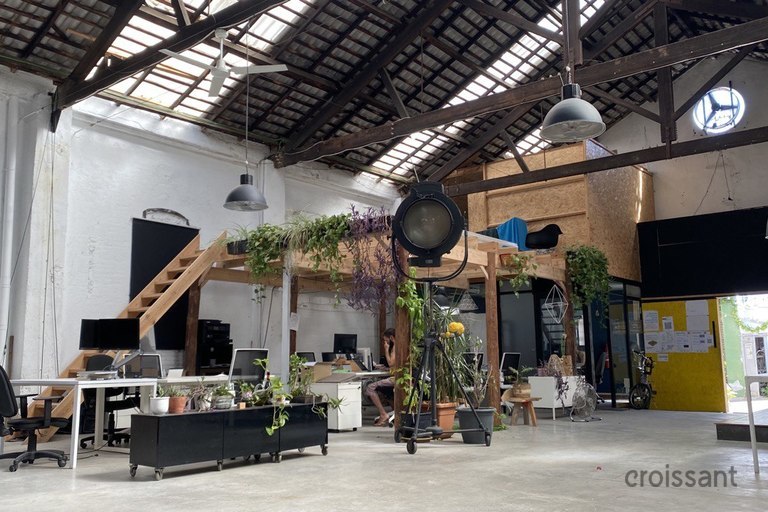
Site visit: Hort del Clot, Sant Marti
Hort del Clot is a community green space which a participatory project which aims at collaborative awareness about food sovereignty and zero-waste economy.
In this particular project, a lot of Senegal migrant lives were improved by creating a community where they could grow their own food and take it back home. It instils a certain responsibility in them and makes them feel like they belong,
We spoke about their struggles in being an established organization and creating a green network whilst also fighting for funding from the municipality.
It was interesting to see the veggies and fruits that were grown in this garden and how much the community knew about it. it brought people together in a city that wasn’t their own but now had embraced it and now feel like they belong there.
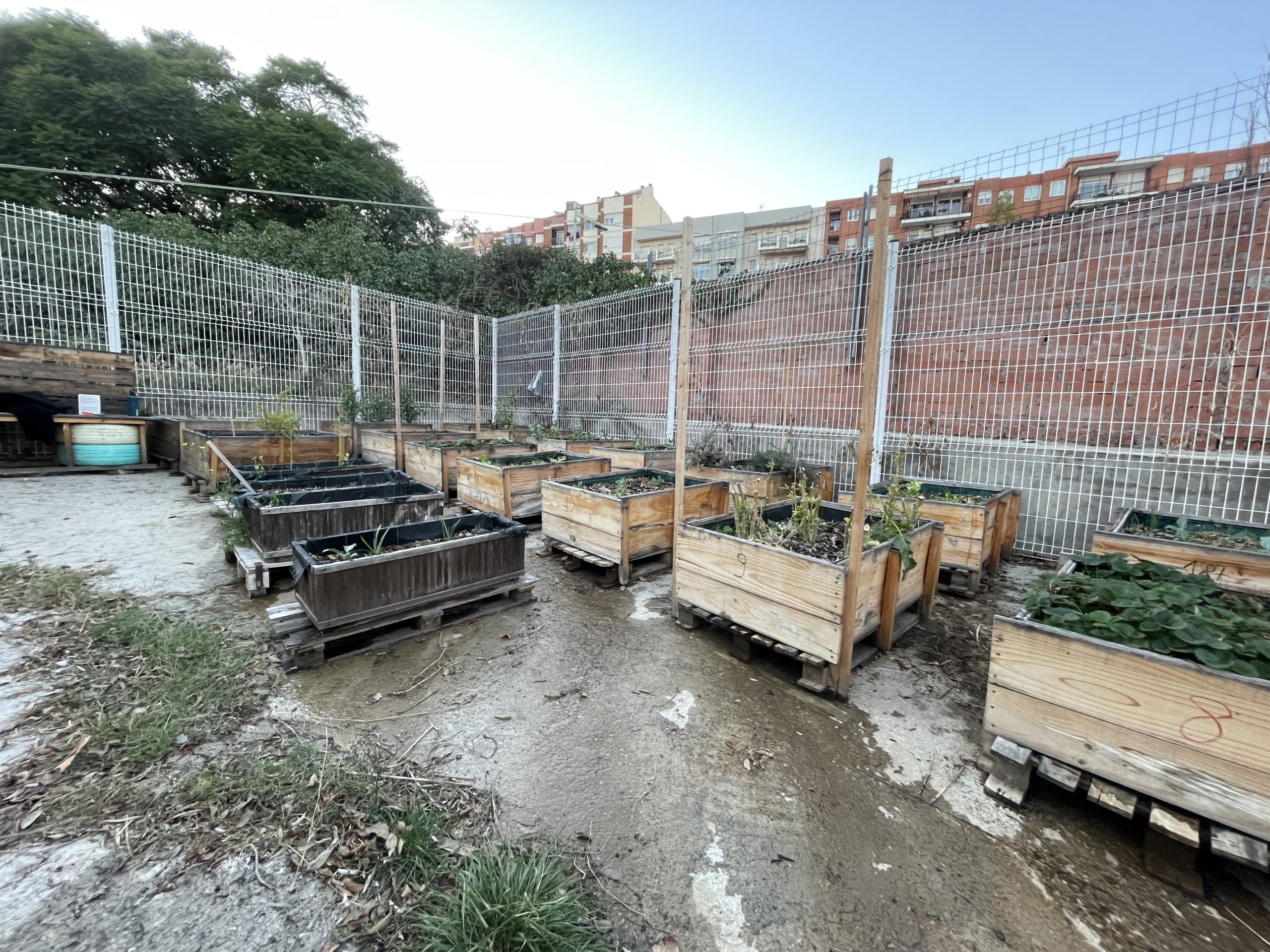
LAND
Visit to La Borda
Q: What is La Borda and what did you get from the visit? How does something like this create a community?
A: La Borda is a cooperative society, part of the Can Battlo society that is a self organized affordable housing complex where egalitarian relationships are emphasized upon. People from all genders, age and sexualities are welcomed. The community is defined by the space itself as well as the activities a member is a part of. Spaces designed encourage the interaction of the communities and every resident is instilled with a responsibility to maintain the complex. Participation from the residents was a big part of the success of La Borda. It was designed with the residents, which increases the value of the space. The construction itself was that with a thoughtful approach. The aim was the make use of existing resources in the most eco-friendly and sustainable way.


Exercise: Community engagement
What are the values, purposes, objectives, outcomes and meaningful engagement when it comes to community engagement?
An exercise to understand the needs of a community and feel more grounded to the reality. We were given large prints of approaches that we had to define with respect to different aspects of engagement.
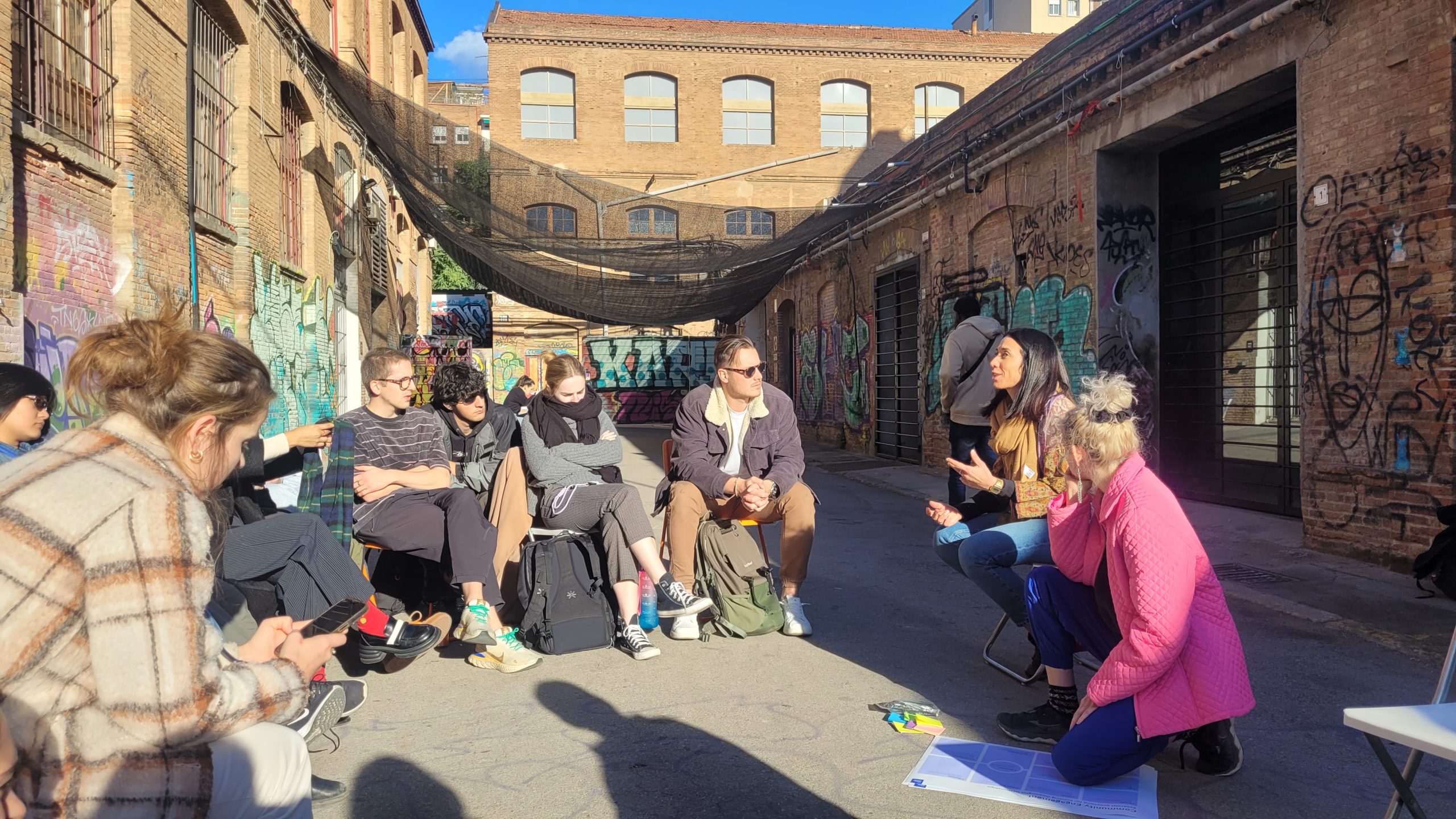

Conclusions
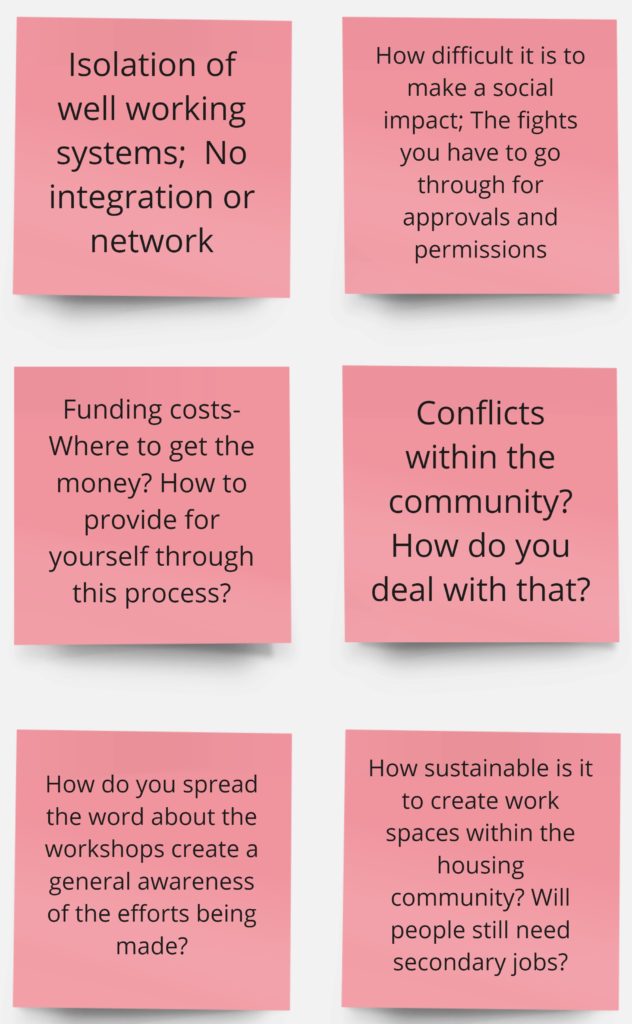
Community definition and intervention

Interrelation of various entities
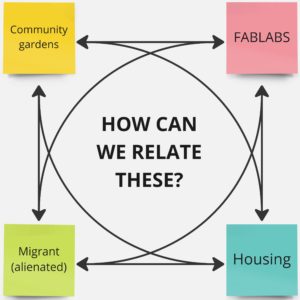
The entities

Flowchart of entities
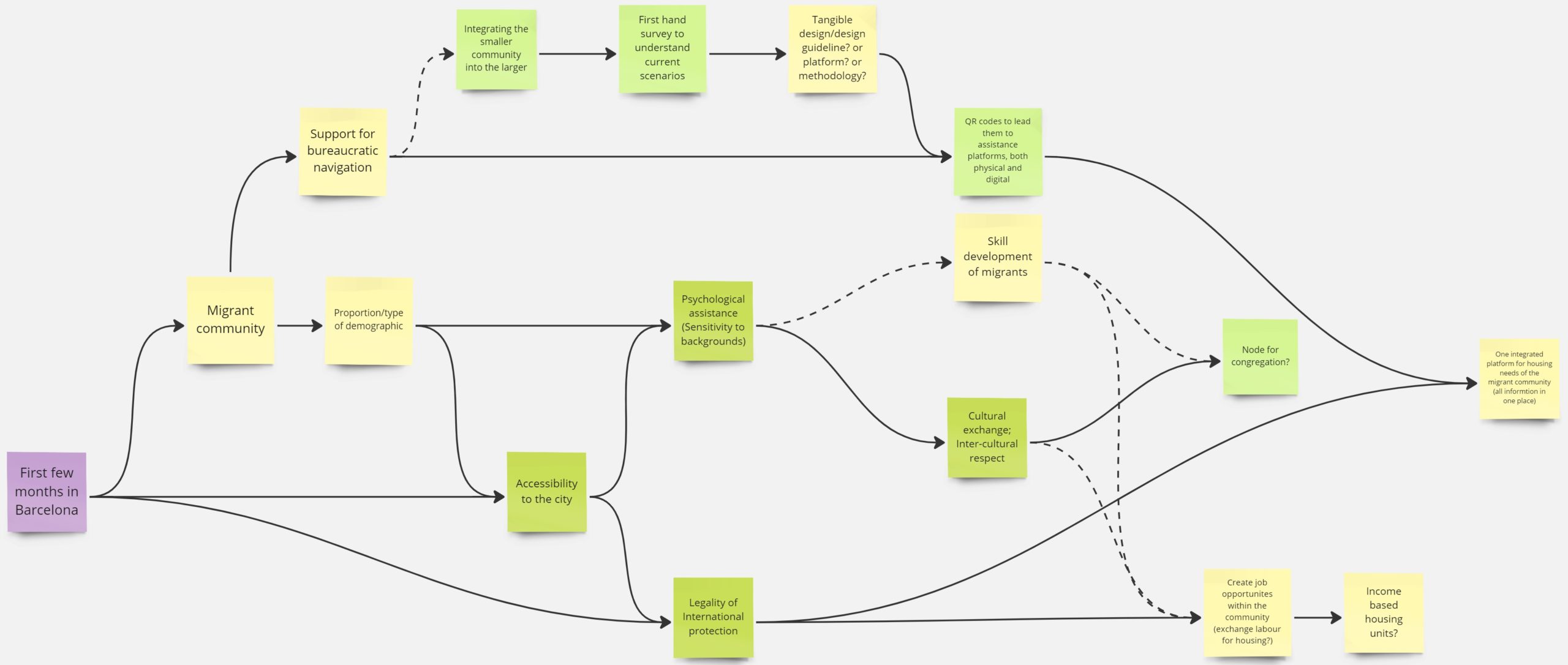
Values
The idea is to create an autonomy and break from the power struggle that currently exists, with respect to providing facilties for the migrant communities. The aim is to design self-governed spaces that are operated and maintained by the migrants themselves, forming a network in the city that helps with the navigation of migrants to lead a more sustainable and peaceful life.
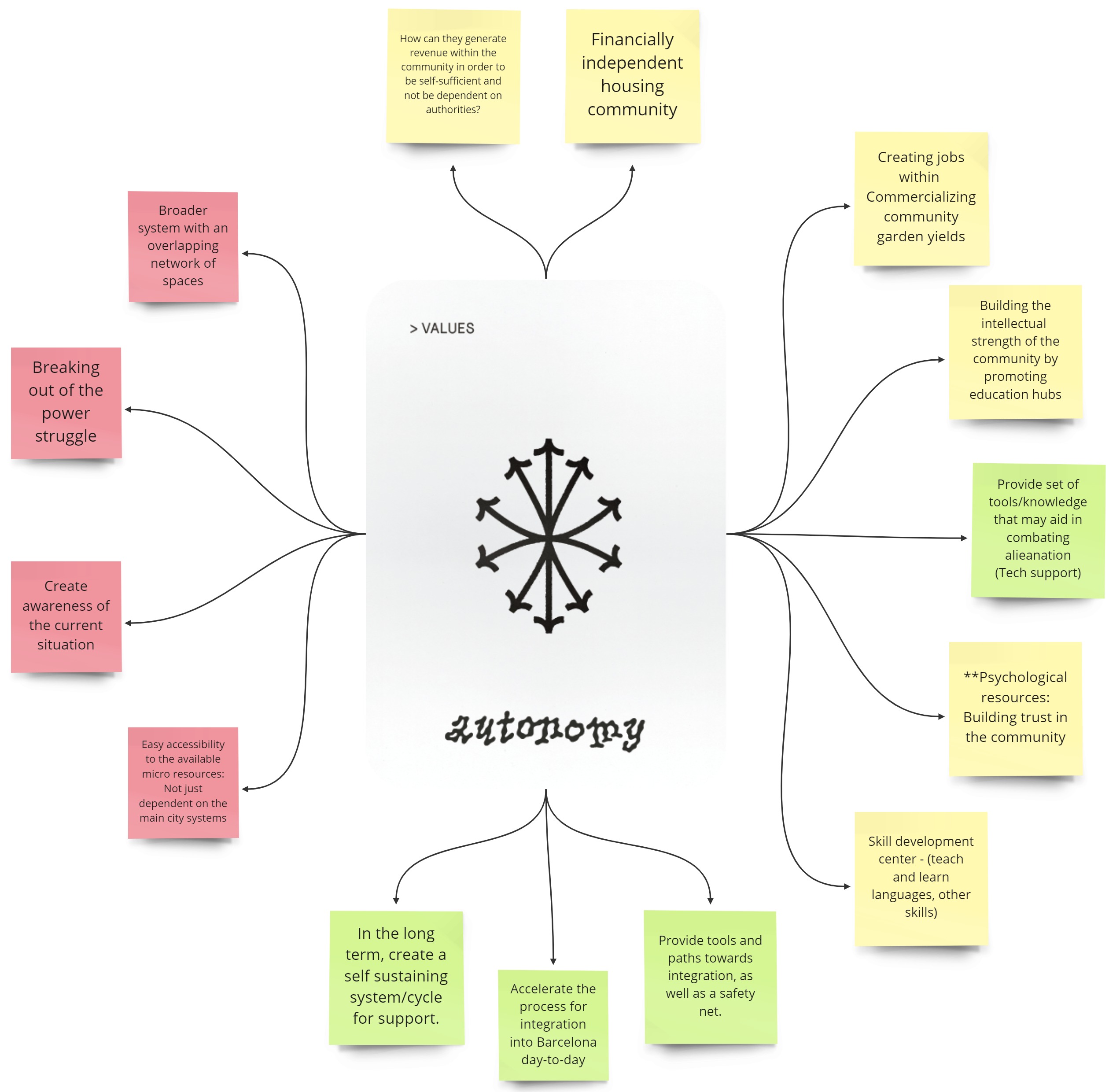
Roles

Principles
Creating a nurturing and secure environment for the migrant communities such that they can establish themselves well, whether it’s accommodation, jobs or skill development. Some ideas are to create community projects like gardens and education centers, where they can invite the city to their spaces and make them more aware of the situation. This also allows for the migrants to use their skills and improve their skills. The idea is to instil a sense of responsibility so they feel like they belong. It is equally important to design systems which allow for a smooth process when they arrive in the city. Interventions like digital access, access to already existing communities and people, temporary shelters, food halls etc., would help them navigate through the city much easier.

Intervention and prototype design
A pixel in the bigger picture: We believe changes happen on a macro scale, so the system we are proposing is more on the city scale, where we propose a network of functioning units that make a community sustain. Our intervention will just be a small pixel in a larger organism.

Different stages in the system

First point of contact
The above image represents a simple linear working of how we believe a ‘first point of contact’ stage in the system would work for a migrant who has just reached Barcelona.

So, what is the intervention?
The broader idea for the intervention is to design a physical first point of contact which can easily be accessed by a migrant, and placed strategically near public spaces like parks, transport hubs, public toilets etc.,. These totems are digital interaction bots that will help the migrants receive more information about the city with respect to what they would be looking for. For example, a temporary shelter nearby where one could get immediate abode, or a soup kitchen where one could get food, or get in touch with organizations that help one get a job based on their skillsets. This totem serves to be a mediator between the immediate needs of a migrant and the existing organizations that cater to similar needs. The totem would also help create a database of the migrants, so they can be reached out to, if needed.

What is the prototype?
The prototype is a digital totem that will be placed at major spots in the city near public spaces, for easy access. Using this totem, one can access the different facilities in the city, like organizations that help with careers or even housing communities. The totem include different languages for easy comprehension, and will allow for printing out the information required, so one can travel around the city, even without a phone.
In the video of the prototype journey, we are showing the story of 20 year old Adam, who is a migrant from Morocco, in search of a job opportunity in Barcelona. He has arrived in Barcelona via a mutual friend and now wants to get in touch with someone who can get him a job in the service industry, as he is skilled in kitchen work and one day wants to set up a restaurant in Barcelona. The totem is going to help him contact the right people so he may continue his journey.
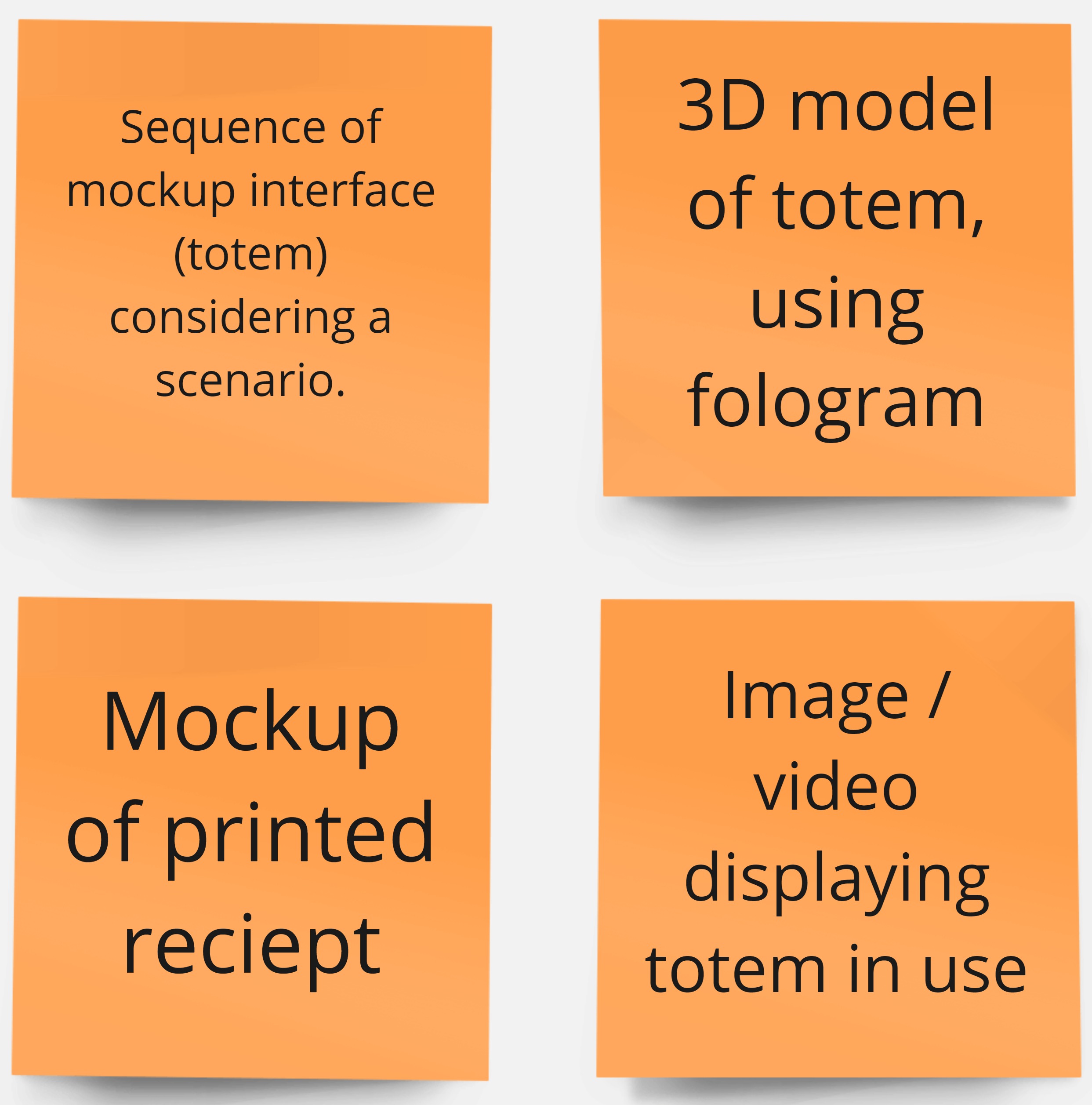
Final video of the prototype
https://drive.google.com/file/d/1n0OcUxBwXlAjw_wBeO3Hy0o6_9V7u3po/view?usp=drive_link

